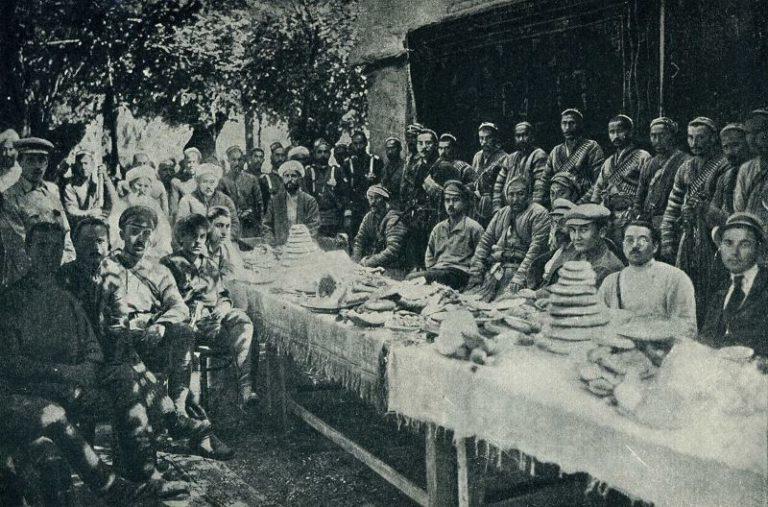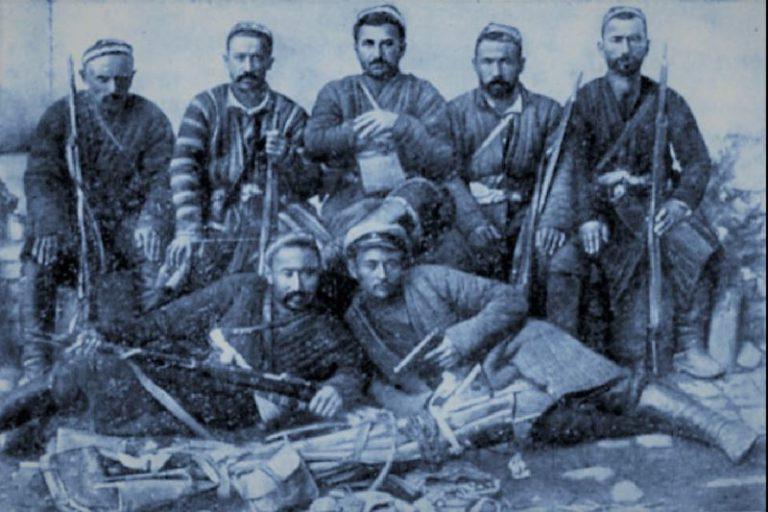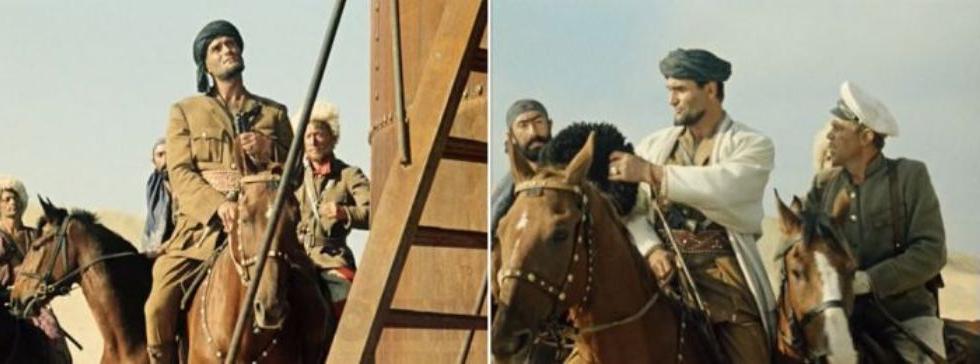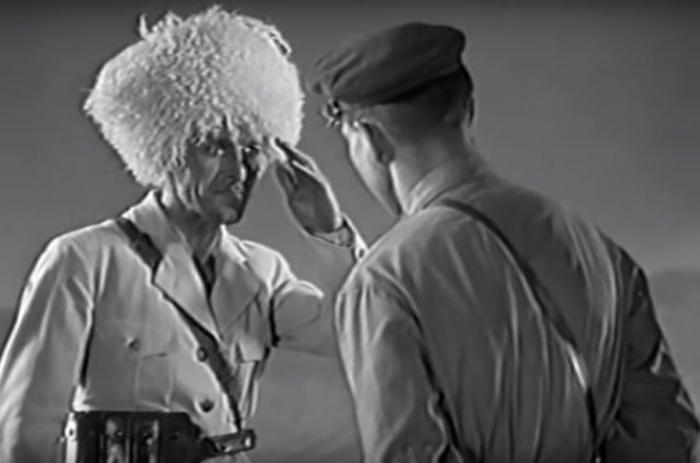We all remember the basmachi from Soviet films telling about Asia. In our subconscious, these people are armed bandits. Now experts are inclined to argue that the Basmachis were not malicious criminals. Initially, Basmachism was liberating. Of course, completely different people turned out to be in the movement, whose goals were not peaceful.
What is basmachi?
In the countries of Central Asia, Basmachism appeared as a liberation movement. Over the past century, many films have been made in which its participants are shown not in the best light. This formed a negative attitude of the viewer towards the Basmachi. Now, some experts are inclined to believe that the negative image of the Basmachi was intentionally created by the Soviet government. Initially, the Basmach movement did not appear to fight the new government. It had the form of a local civil war. As a result, the movement became part of the internal struggle within the Russian Empire.

Soviet ideology presented the image of the Basmachi in the form of insidious and terrible bandits. Now during the revision of old standards, these people began to be called fighters for freedom and independence. Is it really?
The term "basmachi" was coined by the Bolsheviks. But the participants in the movement called themselves “Mujahit”, or rather “Mujahideen - fighters for the faith.”
Enemies or fighters?
There were completely different people among the Basmachis. Initially, the movement came men who were dissatisfied with the economic situation. People wanted to achieve a reduction in fees and tax relief. Among the fighters were religious fanatics. Separate gangs who only robbed and killed also joined the Basmachi. Such representatives did not have any high goals, except for profit. They caused hatred of the local population. Basmachi are associated with such people in our minds.

Representatives of the movement were very different. Some of them fought for faith and land, while others only plundered the already poor population. It was from the latter that the image of the cinematic basmachi was written off. Representatives of the movement rebelled because of hunger and fear against the Bolsheviks. According to historians, in Turkmenistan, more than a million people died of starvation by 1920. The indigenous population was forced to surrender the food surplus fasting.
The most famous basmach
The most famous cinematic basmach can be called Black Abdul from the famous film "White Desert Sun". This film was one of the first Soviet fighters. Once, Stalin watched the tape “Lost Patrol” directed by John Ford and was so impressed that he instructed the head of Sovkino Shumyatsky to make a remake of the American film. The directors of the project were appointed Michael Romm. As a result, the story that took place in the desert was shot. The main characters were the basmachi. The film "Thirteen" was recognized as one of the first Westerns in the history of Soviet cinema.

In the tape, the basmachi were depicted as thugs armed to the teeth.They appeared in front of the audience in the film "The White Sun of the Desert."
Armament
Historians believe that the Basmachi weapons were not as significant as is commonly believed. Very often in films it is shown that the bandits were armed with English Lewis machine guns. This is due to the fact that in Central Asia Great Britain supported the Trans-Caspian interim government. She later took the side of the white movement.

According to the intelligence groups of the Bolsheviks, in 1920, only 5,500 Basmachis fought against the Ferghana Group. The group was armed with only one gun, 11 machine guns and rifles of various systems. However, the Basmachi machine guns were not used, because there was a banal lack of ammunition. As for rifles, it was possible to judge by trophies that people were armed with Russian weapons. There was no evidence that the Basmachis had English machine guns or rifles.
All this allows historians to argue that most of the Basmachis were weakly armed, or even completely unarmed. Therefore, the image of a bandit with knives and a machine gun is more a myth than a reality. Reports from Soviet commanders confirm the weak armament of the rebel movement. Which completely contradicts the image of cinematic basmachi.
Most of the representatives of the movement were ordinary people. Desperation from the massacres and starvation made them fight in the ranks of the rebels with injustice. Some rebels supported the idea of independence of Turkestan. All this gives reason to take a fresh look at the Basmach movement and rethink some facts.
Opinion of the old-timer
Bashtiyar Shakhnazarov, an Uzbek researcher of Basmachism, interviewed Abdulhamed Kochar, who had fled from Turkestan at age 20. At the time of the conversation, the man was already 100 years old. He expressed his opinion on the Basmach movement. Abdulahmed claimed that the Basmachis were a project of the Soviet government, which sought to carry out the Sovietization of Turkestan. According to Kochar, the emissaries dressed people who sympathized with the new government as bandits, sending them to night robberies in order to cause discontent and hatred of ordinary people.
The old man confirmed that most of the rebels in Central Asia fought for national liberation. People protested over the confiscation of property and food surplus.
Cessation of movement
In the twenties, the last rebel units were squeezed out by the Red Army into northern Afghanistan. But in Soviet territory, the Basmachi left a large intelligence network, which over time lost its significance.
As an organized movement, Basmachism ceased to exist with the death of the last leader, Junaid Khan, by 1938. From Afghanistan, he led groups of bandits who made forays into Turkmen territory in the thirties. But their activities had nothing to do with the liberation movement.
Ambiguous personalities in history
Many historians described in their works the Basmach movement in Central Asia. Among them were researchers Ilyas Daudi and Alexander Pylev, who set out the life story of one of the leaders of Basmachism, inextricably linked with the struggle. Mahmoud-bek, like other leaders of the movement, emigrated to Afghanistan in 1921. But from abroad, he skillfully received information from his agents. He actively sold the information received to foreign intelligence, having grown rich on it. At the beginning of the Second World War, the Nazis managed to attract kurbash to their side for cooperation. It was not difficult to lure the former leader, it was enough to offer a good reward. Mahmud-bek was offered to lead the Union spy unit. To expand the agent network in the territory of the union, a decent amount was allocated to him. Later, on the instructions of Abwehr, he prepared sabotage groups for abandonment in the USSR.
Instead of an afterword
In the book “The Stalin’s Afghan War,” Yuri Tikhonov wrote that Soviet intelligence nevertheless managed to turn over Mahmud-bek. For money, he was ready to serve any country and government. It is difficult to judge how right the author is. However, over time, Soviet intelligence managed to neutralize the activities of German agents in Afghanistan.
After the victory of the Soviet troops, the Afghan government deliberately eliminated Abwehr agents on its territory. This was probably due to a reluctance to conflict with the obvious winner of the war. No one wanted to quarrel with a stronger neighbor when the outcome of the struggle was clear.















